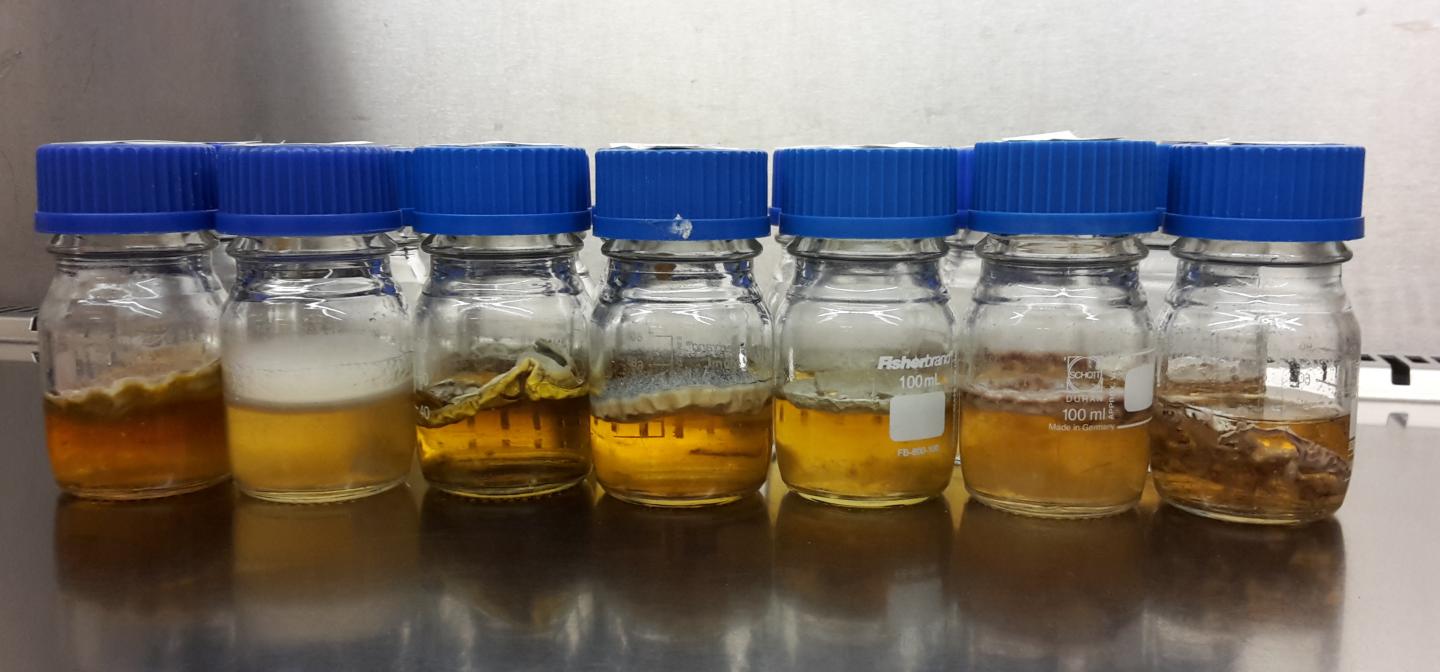November 26, 2019 -- To address the need to identify new therapeutic targets, researchers at the Hubrecht Institute turned to fungi. The researchers tested secondary metabolites from over 10,000 fungi species and identified 34 biological active compounds with the potential to move to the next step of therapeutic drug development. The research was published in Scientific Reports on November 26.
Pharmaceutical relevance of fungi

Currently, there are very limited numbers of biologically active compounds used in the manufacture of prescription drugs. Therefore, the is a real need to uncover new biologically active molecules to develop new drugs. Fungi are a rich source of biologically active natural compounds. Many clinically important drugs are derived from secondary metabolites of fungi metabolism. Examples include beta lactam antibiotics such as penicillin and cephalosporin, and cholesterol lowering compounds compactin and lovastatin. "Every year new compounds produced by fungi are identified, but so far we have only investigated a very small subset of all existing fungi. This suggests that many more biologically active compounds remain to be discovered," explains Jelmer Hoeksma, a researcher at the Hubrecht Institute.
Ten thousand fungi
The research team, including researchers from the Westerdijk Institute and Utrecht University set up a fungi library, screened it for production of secondary metabolites with biological activity using zebrafish embryogenesis as read-out. The Westerdijk Fungal Biodiversity Institute is home to the largest collection of live fungi in the world, and perfect positions the research team to investigate and screen 10,207 strains of fungi in this study. The experimental model was chosen because of the physiological similarities between zebrafish and humans. This model also enabled the researchers to conduct whole animal testing. The transparent nature of zebrafish embryos facilitated identification of differences between embryos that had been treated with different compounds. Once the 1,526 filtrates containing secondary metabolites were identified, 150 compounds were selected for further purification and classification using several analytical chemistry techniques including HPLC, mass spectroscopy, UV-Vis spectrum, and NMR measurements. They successfully identified 34 known compounds.
Color has meaning
A variety of phenotypes were observed upon treatment of different compounds. One phenotype of interest to the researchers was pigmentation defects. Reduced pigmentation in zebrafish has been previously shown to inhibit melanoma (skin cancer) progression. In the current study, the compounds compactin and lovastatin reduced pigmentation when administered at high concentrations. Altogether, this indicates that those compounds could inhibit proliferation and invasion of melanoma cells in high concentrations. Now, the researchers are focusing their efforts on purifying the fungal filtrates which they have shown reduce zebrafish pigmentation in an attempt to identify active compounds that could combat melanoma.
The evidence produced by this study highlights the importance of continued investigation of organisms for the discovery of new drugs. Moreover, "the large library of fungal filtrates that we have set up can also be tested in many other systems, such as models for antibiotic resistance in bacteria and tumor development, making this study only the tip of the iceberg," says Hoeksma.
Do you have a unique perspective on your research related to microbiology? Contact the editor today to learn more.
Copyright © 2019 scienceboard.net






